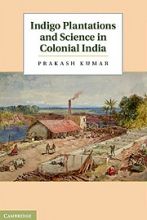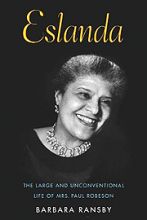 Happy new year everyone – I hope you all had a good festive period, and that 2014 is panning out well so far. I’m always quite pleased to be back to sobriety / normality (or what passes for it at the University of London) at this time of year – when there’s no expectation of fun, you can’t be disappointed.
Happy new year everyone – I hope you all had a good festive period, and that 2014 is panning out well so far. I’m always quite pleased to be back to sobriety / normality (or what passes for it at the University of London) at this time of year – when there’s no expectation of fun, you can’t be disappointed.
Not that there isn’t fun aplenty lurking in this week’s batch of reviews, starting with Peter H. Hansen’s The Summits of Modern Man: Mountaineering after the Enlightenment. Dawn Jackson Williams enjoys (no. 1530) a significant contribution to the field, which should be praised for placing the history of mountaineering ‘on belay’.
 Next we turn to Indigo Plantations and Science in Colonial India by Prakash Kumar, as J. N. Sinha and the author discuss (no. 1529, with response here) a well written, and impressively readable book, meticulously researched and based on a wide variety of sources skilfully used in the narrative. This is the first full- fledged independent work on the subject concerning India, and is sure to stimulate interest in the subject and prove a reference work for future research on indigo in India.
Next we turn to Indigo Plantations and Science in Colonial India by Prakash Kumar, as J. N. Sinha and the author discuss (no. 1529, with response here) a well written, and impressively readable book, meticulously researched and based on a wide variety of sources skilfully used in the narrative. This is the first full- fledged independent work on the subject concerning India, and is sure to stimulate interest in the subject and prove a reference work for future research on indigo in India.
 Then we have Richard Cust’s Charles I and the Aristocracy, 1625-1642, which Christopher Thompson finds (no. 1528) to be a study of major importance, which asks new questions, poses novel challenges and suggests positive answers of a challenging and comprehensive nature. By any standards, it is a study of major importance.
Then we have Richard Cust’s Charles I and the Aristocracy, 1625-1642, which Christopher Thompson finds (no. 1528) to be a study of major importance, which asks new questions, poses novel challenges and suggests positive answers of a challenging and comprehensive nature. By any standards, it is a study of major importance.
 Finally Imaobong Umoren believes (no. 1527) Eslanda: The Large and Unconventional Life of Mrs Robeson (by Barbara Ransby) should appeal to the general and specialist reader and is an excellent example of the benefits and beauty of biography at its best. In her second biography Ransby’s stylish skills chronicling the life, times and ideas of Robeson are again revealed.
Finally Imaobong Umoren believes (no. 1527) Eslanda: The Large and Unconventional Life of Mrs Robeson (by Barbara Ransby) should appeal to the general and specialist reader and is an excellent example of the benefits and beauty of biography at its best. In her second biography Ransby’s stylish skills chronicling the life, times and ideas of Robeson are again revealed.
